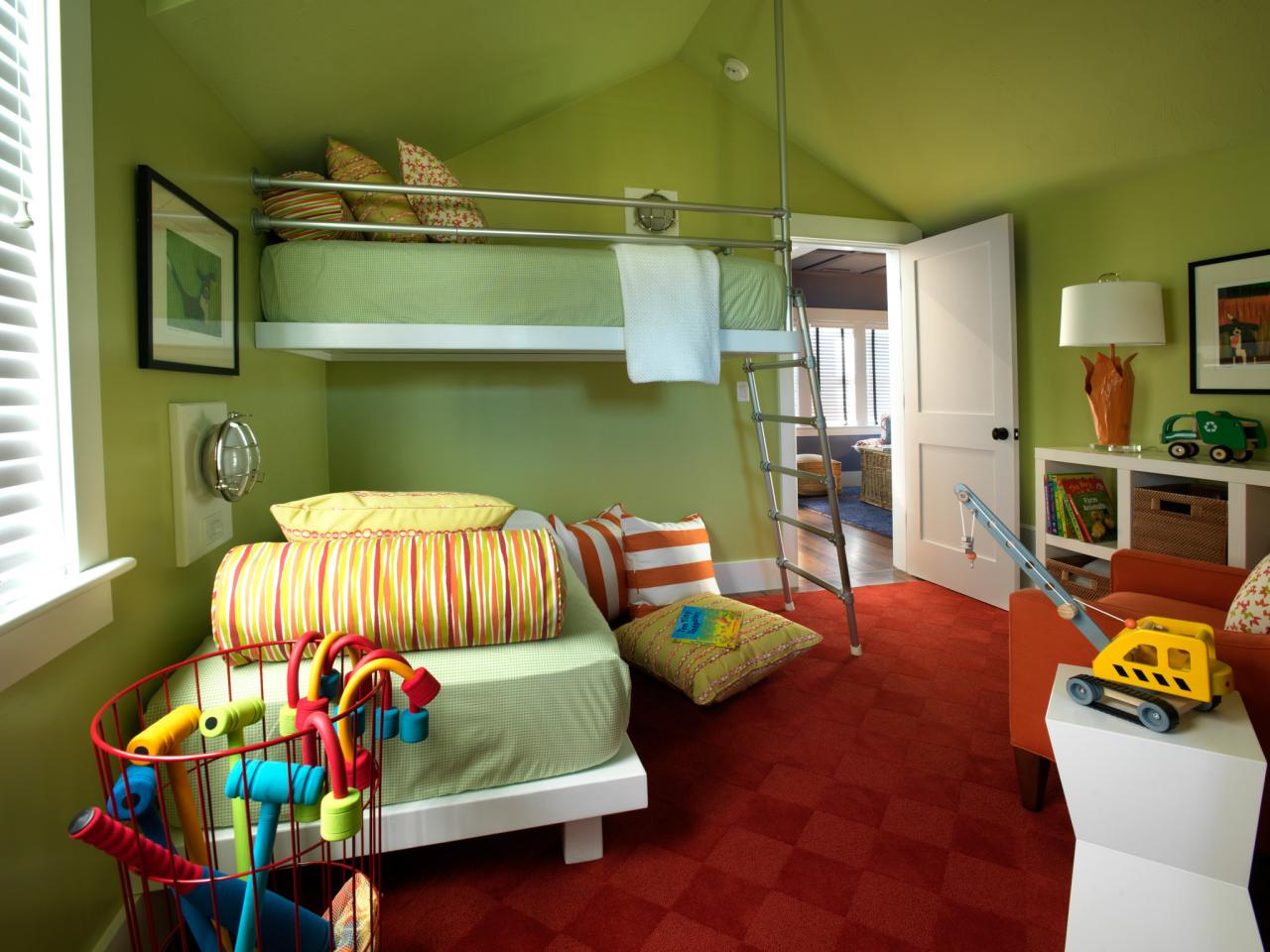
laughing,crying,playing,fighting. a shared sibling bedroom is a beehive of activityand needs. and that means there’s a lot for parentsto tackle when creating their kids’ shared bedroom. with twice the amount (or more) of evolvingpersonalities and necessities, it’s often a daunting task for parents to accommodatestorage, space and the individual style of each child. here are some helpful tips to overcome commondesign challenges and create a happy and functional room for your young roommates.
creating a boy and girl shared room designing a room for a brother and a sisterdoesn’t have to be challenging. in fact, it’s probably the easiest challengeto overcome when planning a shared room. your first step is to select an underlyingcolor palette for the main elements of the room (walls, rug, furniture) that is genderneutral…and, if they’re old enough to chime in, that each sibling gives the thumbsup. color combos such as white and grey, turquoiseand white or a mix of primary colors work well for both boys and girls. to complement your underlying palette, layercomplementary colors and patterns on top of
that. for example in a grey and white room, tryaccenting with yellow accessories. for patterns, lean towards stripes, chevronor solids with large geometric shape(s). when selecting furniture, opt for furniturewith clean lines and that’s non-themed (steer clear of the race car or sleeping beauty beds)and pair with neutral colored essentials such as lamps and window treatments. the exciting part of creating a super funbedroom for your young brood is accessorizing and customizing design elements to match theirbudding personalities. select design elements that make the roomfeel like it belongs to both of them.
personalize accessories throughout the roomsuch as wall art or coat hooks. marquee lights with their names or first initialadd a pop of energy and excitement to any space. likewise, subtly add gender specific themesin one or two accessories, but keep them color coordinated. for example when accessorizing with red, trya throw pillow with a red fire engine for him, and a pillow with a red flower or heartfor her. storage that is complementary to the designscheme but specific for each gender (think charcoal for boys and yellow for girls) canalso seamlessly pull a room together.
creating a room for different ages sometimes its not just jeremy and sarah thatyou need to accommodate, but a 3-year-old jeremy and a 4-month-old sarah can definitelyadd another layer of design anxiety. the first thing to tackle is the furniturelayout. if you have a baby, chances are you’ll bein and out of the room at night to tend to the baby. if possible, place their beds in oppositecorners or walls with the crib being most accessible to the door. obviously structural elements such as windowsand heaters can dictate otherwise but your
design objective is to give each child themost comfortable night’s sleep without one waking the other. creating a play area that both siblings canenjoy, even simultaneously, is super helpful, especially for tired mommies and daddies. floor mats, cushions and soft larger itemslike a rocking horse and tents are perfect to outline the area and fun for both to playin. place your older child’s toys in accessiblestorage containers, but higher than the floor so your youngest can’t easily touch it. for example, whether it’s a bookshelf, storagecube or wall unit, place baby friendly toys
and items on the lower shelves. your toddler or older child can stand andreach for the basket of lego. incorporate elements that show your childrentheir growing family. photos of the kids together, framed handprintsof when they each were newborns encourage them to appreciate their younger or oldersibling while adding a warm family atmosphere to their bedroom. creating ample storage for two or more finding the space in one room for twice asmuch furniture and storage is one of the most daunting tasks when designing a shared room.
this is where your resourcefulness and editingeye need to kick into high gear. less is definitely more in a shared bedroom,as is multifunctional and shared design. as a baseline, selecting streamlined furnitureis essential to keep the room feeling as spacious as possible and allow for storage and playing. if your kids are old enough, bunk beds arealways an excellent choice. whether l-shaped or vertical, a bunk bed isan efficient use of space and oftentimes has built-in storage underneath. speaking of…under the bed storage such asrollaway drawers is always helpful in creating more space and can hold seasonal or limiteduse items.
storage chests with cushions can be used asa seat to a play table as well as conceal a mountain of toys. a wall unit with drawers can pull double dutyas a dresser and desk. shelving is super convenient for toy organizationas it doesn’t take up a lot of space and can be placed above dressers, desks, evenabove the door for hardly used items. similarly, placing a bookshelf at the footof the bed doesn’t take up valuable wall space and may even give you another surfacenear the bed for a lamp or nighttime book. for clothing, wall and door hooks are helpfulfor every-day go-to items. in the closet, install two rods (i.e. doublehanging) so each child can have separate hanging
regardless of your design challenge, whencreating a shared room for your little ones if you stick to resourceful, efficient, funand creative choices, you’ll no doubt create a bedroom your kids will love! how are you going to design your kids’ bedroom?